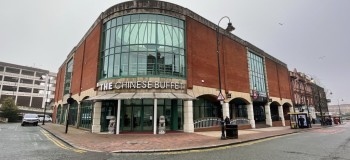24/05/2023
Insights
Transport planning is an area of development that people rarely spare a thought for. The new retail spaces, commercial areas and residential developments grab all the headlines, but without conscientious transport planning in the background, those new and exciting developments would never get the go-ahead.
Transport planning can have a positive impact on our lives, yet it’s only when it goes wrong that we give it a second thought.
Why is there no pavement here? How am I meant to cross this road with my buggy? Why is there so much traffic?
This is all down to transport planning, or the lack of it. When transport planning is done well, you travel seamlessly to jobs, schools, shops and other vital services. It can also enhance social and economic wellbeing, improve the local environment and promote public safety.
What is transport planning?
Transport planning is a discipline that sits somewhere between civil engineering and planning. It’s all about ensuring the necessary facilities, policies and plans are in place to improve our transport systems and make sure everyone can travel safely and efficiently, not just road users but also pedestrians and cyclists.
There’s a huge amount for transport planners to consider. It’s incredibly data-intensive, but they also have to weigh up factors such as the future shape of towns and cities and how people’s travel will change in response to climate change.
A few examples of transport planning in practice include:
- Assessing the impact of new building developments on transport systems
- Creating travel assessments and statements for planning application support
- Designing travel plans that demonstrate a development’s sustainability
- Modelling traffic flows using specialist tools and techniques
- Running computer simulations to determine the impact of transport improvements
- Carrying out feasibility studies to determine whether an area of land can be developed
Why is transport planning so important?
At its essence, the focus of transport planning is to enable the efficient movement of people and goods around an area. However, efficient transport touches on so much more than that. Good transport planning can help to improve the quality of life, public health and environmental sustainability of an area. It can also contribute to its productivity and economic growth.
What makes transport planning so complex is that the demands for travel in an area can be conflicting, often with political and social factors to take into account. For example, transport planning decisions can be made that improve the speed of travel for motorists in an area, but that can harm the interests of pedestrians. Alternatively, you can make changes to improve the walkability and air quality of an area, but that can have a detrimental impact on travel times.
This is why transport policy inevitably becomes a social policy. Transport planners must consider the needs of every transport user to create livable and efficient communities for us all. It’s no exaggeration to say that transport planners can change the world, as the decisions they make about transport design determine how our cities and public spaces are used.
Expert transport planning assistance
At Eddisons, our transport planners work with clients to help them understand how their developments will impact local transport systems. Whether it’s feasibility planning, junction modelling, travel assessments or masterplan developments, we have the experience and knowledge to deliver successful transport planning solutions.
Find out more about our transport planning and highway design service and get in touch to discuss your project with our team.






